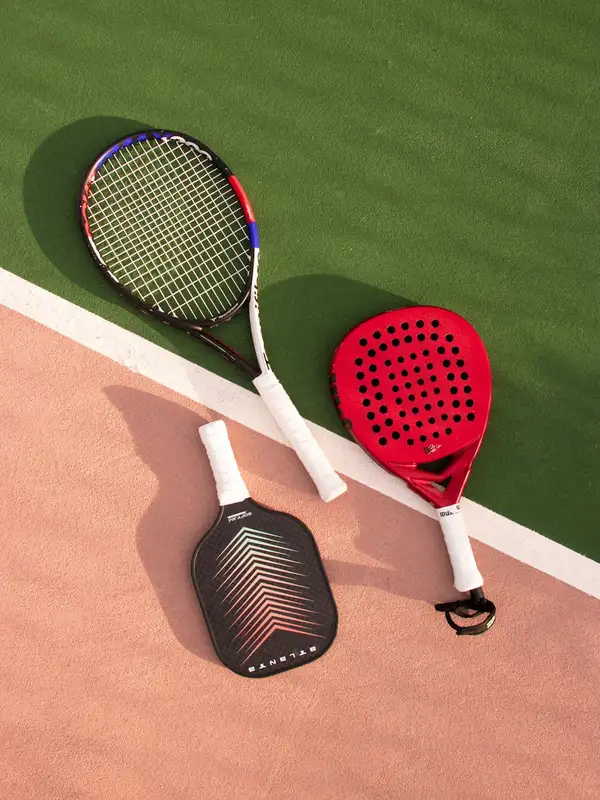The evolution of tennis racquets has been nothing short of revolutionary, transitioning from the classic wooden frames to cutting-edge materials and innovative designs. The global tennis racquet market is thriving, catering to players across all skill levels, from novices to seasoned professionals. Industry leaders such as Wilson, Babolat, Head, and Yonex are at the forefront, consistently enhancing racquet performance through dedicated research and development. The market offers a wide array of racquets, each designed to suit different playing styles, with variations in weight, head size, string pattern, and grip size contributing to their adaptability.
Technological advancements, including carbon fiber construction and vibration dampening systems, have significantly enhanced power, control, and comfort. Prestigious global tennis tournaments, such as the Grand Slam events like Wimbledon and the US Open, showcase the latest innovations in racquet technology as professionals seek equipment that complements their playing styles. The growing popularity of tennis as a recreational sport has further fueled the demand for high-quality and user-friendly racquets worldwide. Overall, the global tennis racquets market reflects a blend of tradition and innovation, with manufacturers continually pushing boundaries to meet the diverse needs of tennis enthusiasts around the world.
Key Market Trends
Customization and Personalization
A significant trend in the global tennis racquets market is the increasing demand for customization and personalization. Players, both amateur and professional, are seeking equipment that aligns precisely with their playing style, preferences, and physical attributes. Manufacturers are responding by offering customizable features, allowing players to tailor their racquets to specific needs. Customization options may include adjustable string tensions, interchangeable grommet systems, and the ability to modify grip sizes. This trend reflects a shift toward more individualized and player-centric approaches, acknowledging that no two players have the same playing style or feel for their equipment.
Integration of Smart Technology
The integration of smart technology into tennis racquets is a growing trend that aligns with the broader wave of technological advancements in sports. Smart racquets come equipped with sensors that capture data on various aspects of a player’s performance, including swing speed, ball impact location, and the number of shots played. This data is then transmitted to accompanying mobile apps or devices for analysis. This trend not only appeals to tech-savvy players but also serves as a valuable tool for improving performance. The collected data provides insights into playing patterns, strengths, and areas for improvement, facilitating better injury prevention by monitoring player exertion and fatigue.
Focus on Sustainable Materials and Manufacturing
In response to growing environmental awareness, there is a notable trend in the tennis industry towards using sustainable materials and adopting eco-friendly manufacturing practices. Manufacturers are exploring alternatives to traditional materials, such as incorporating recycled plastics, responsibly sourced wood, and other environmentally friendly components in the production of tennis racquets. This trend aligns with the broader movement towards sustainability in consumer goods. Players are increasingly valuing products that minimize their ecological footprint. Manufacturers are responding by not only making changes in the materials they use but also by adopting more sustainable manufacturing processes, reducing waste, and exploring options for product recycling.
Segmental Insights
Growth of Control Racquets
The control racquets segment is experiencing significant growth in the global tennis racquets market. As both amateur and professional players increasingly prioritize precision and accuracy, the demand for racquets that enhance control has surged. These racquets feature tighter string patterns, smaller head sizes, and heavier weights, providing players with improved command over ball placement and shot accuracy. This segment caters to players who value finesse and the ability to dictate the pace of the game. Manufacturers are introducing advanced technologies that optimize control while maintaining other key performance factors, contributing to the growing popularity of control racquets.
Amateur Segment Growth
The amateur segment is witnessing substantial growth in the global tennis racquets market. As more individuals take up tennis as a leisure activity or for fitness, the demand for racquets designed for amateur players has increased. Manufacturers are developing racquets that provide a balance of power, forgiveness, and ease of use, which are essential for players still refining their skills. These racquets often incorporate user-friendly technologies, larger sweet spots, and lighter weights to enhance the playing experience. The amateur segment is a pivotal market force driving innovation in racquet design, making tennis more accessible and enjoyable for a growing community of players worldwide.
Dominance of North America
North America stands as the dominant region in the global tennis racquets market. The region has a robust tennis culture, with a large and active player base contributing to consistently high demand for tennis racquets. High-profile tournaments like the US Open enhance interest in the sport, further bolstering market demand. North America’s strong economic indicators and high disposable income levels among consumers make it a lucrative market for premium and technologically advanced tennis racquets. Leading manufacturers strategically focus on North America, ensuring their products meet the preferences and demands of the diverse player community, consolidating the region’s position as a powerhouse in the global tennis racquets market.
